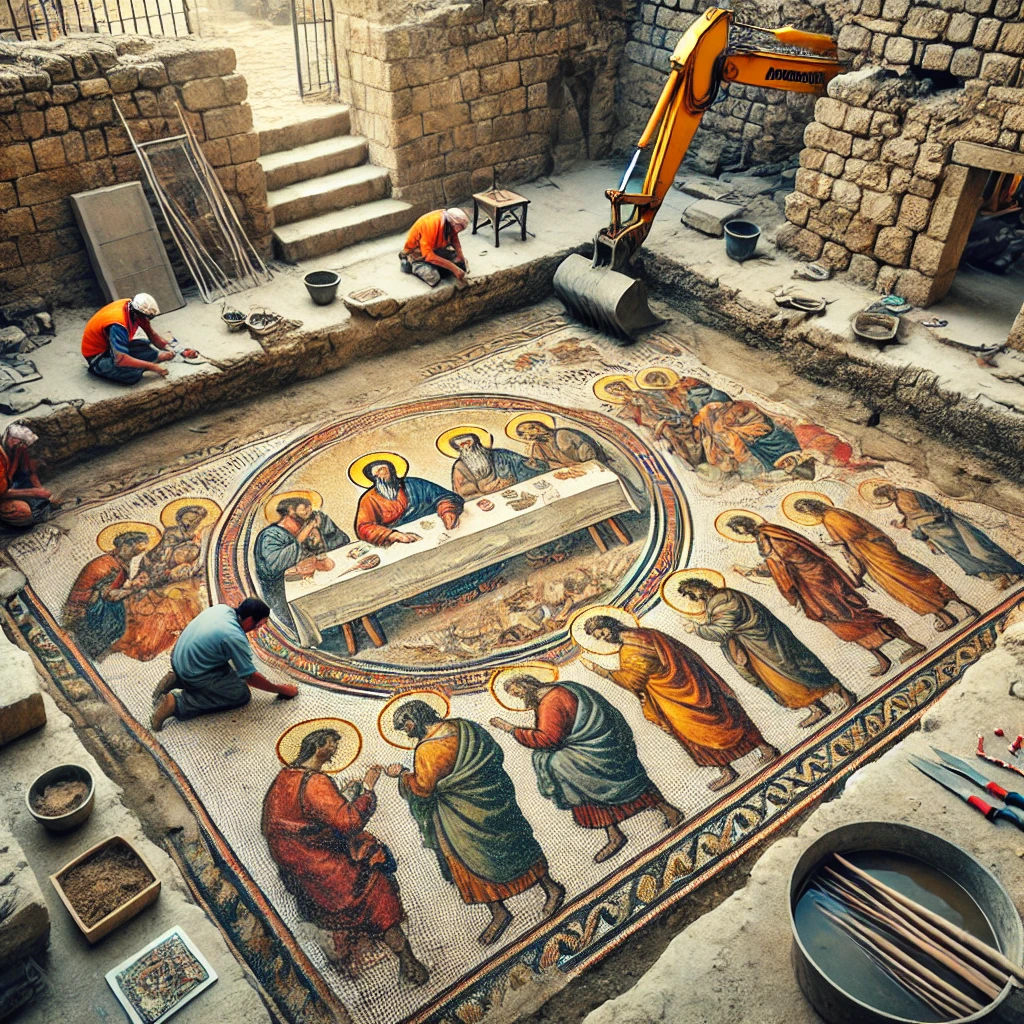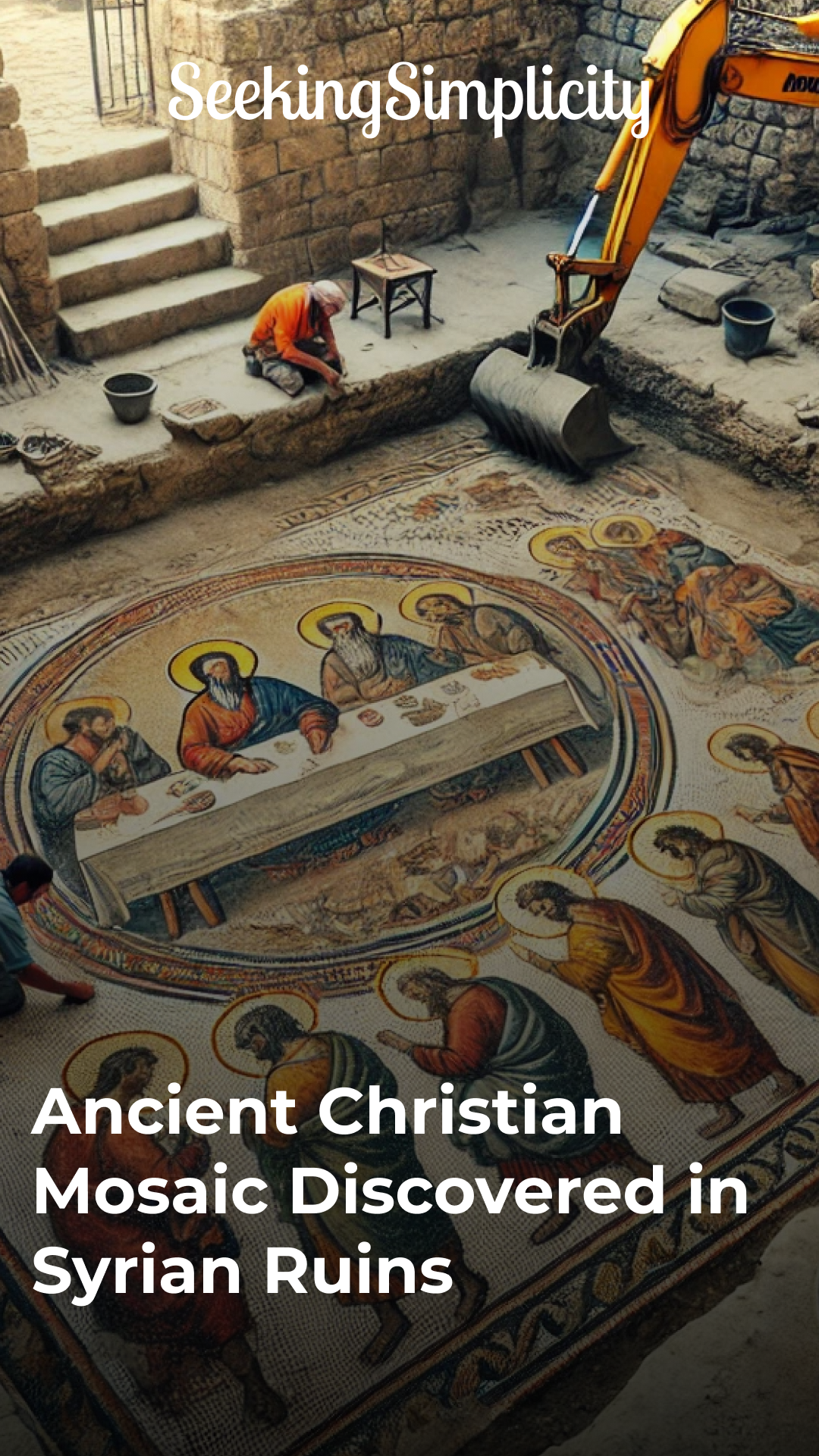Aleppo, Syria — Archaeologists in northern Syria have made a groundbreaking discovery: a Christian mosaic dating back to the 4th century AD. This exquisite piece of art, unearthed within the ruins of an early Christian church, is being hailed as one of the most significant finds in recent history, shedding new light on the faith and culture of early Christians in the region.
The mosaic, which spans over 15 square meters, depicts scenes from the Bible, including the Last Supper, the Good Shepherd, and symbolic representations of early Christian theology. Adorned with vibrant colors and intricate details, the artwork has remained remarkably well-preserved, despite centuries of conflict and environmental exposure. Inscriptions in Greek and early Syriac provide clues about the church’s congregation and the role of the mosaic in worship practices.

“This is not just an artifact; it is a window into the lives and beliefs of early Christians,” said Dr. Nadia Al-Faris, the lead archaeologist on the project. “The details in this mosaic offer us a glimpse into how these communities expressed their faith through art.”
The church itself, believed to have been constructed during the late Roman Empire, was likely a central hub for Christian worship during a time of rapid religious transformation. Artifacts found alongside the mosaic include pottery, remnants of an altar, and fragments of wooden crosses, suggesting a thriving and devout congregation.
The excavation is part of a larger effort to preserve Syria’s cultural heritage amid ongoing challenges. International organizations and local authorities are collaborating to secure the site and ensure the mosaic is properly documented and conserved. Plans are underway to create a museum exhibit showcasing the mosaic and other artifacts, making them accessible to scholars and the public alike.
“This discovery underscores the resilience of faith and art, even in the face of adversity,” said Dr. Al-Faris. “It is a powerful reminder of the rich cultural and spiritual heritage that still exists in this war-torn region.”
Local community leaders have expressed pride in the find, viewing it as a symbol of hope and renewal for a region striving to rebuild. The mosaic has already attracted attention from historians, art enthusiasts, and pilgrims, many of whom see it as a testament to the enduring power of faith.

